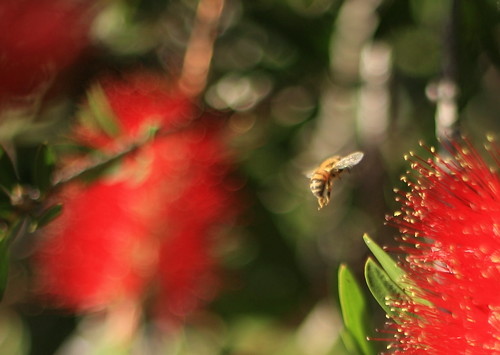The fun stuff’s over. Now we get into the real dreck.
Holy Thursday
In the poems “Holy Thursday,” by William Blake, one can see two completely different ideas. In the first poem, Blake tries to express an optimistic and hopeful image of innocent children singing to Christ on the day of ascension. The poem’s rhythm is playful and childish and effectively carries out Blake’s image. In contrast, the second poem is negative and pessimistic and it questions the nature or existence of a God. The children are rejected and abused by society and they are exactly the opposite of the children in the first poem.
In the first “Holy Thursday,” colorful children are marching into St Paul’s cathedral for the celebration of the ascension of Christ. From the footnote, one learns that these children are from the charity schools in London, meaning that they are very poor and probably don’t have a family. Despite their hardships, the children are still described in a joyful, harmonic way in the first stanza:
‘Twas on a Holy Thursday, their innocent faces clean,
The children walking two & two, in red & blue & green;
Grey headed beadles walkd before with wands as white as snow,
Till into the high dome of Paul’s they like Thames’ waters flow.
With an ABAB rhyming pattern, the poem starts with a bouncing, nursery rhyme quality. The children’s problems are not an issue; they are still cute, innocent, and alive, like a river. The beadles that must keep the kids in order are portrayed as old and lifeless men who have lost their childhood innocence. Even though these children are poor and homeless, they are showing hopefulness and optimism when they go to sing the Lord’s praises.
In the next stanza, the children are again portrayed as sweet and innocent, and there is no mention of the hardships they must face every other day in their life. There are a few different images that Blake gives the reader to express his idea that children are pure and free-flowing characters:
O what a multitude they seemd, these flowers of London town!
Seated in companies they sit with radiance all their own.
The hum of multitudes was there, but multitudes of lambs,
Thousands of little boys & girls raising their innocent hands.
Here, the children are a beautiful and vital part of the London society. They are “flowers” that give pleasure to all men and women. Blake fails to mention that these children are a blight and burden to mankind. They are victims of a cruel and harsh world, and as a result, they reflect images of misery and poverty. However, in this stanza, the children are innocent lambs who have a “radiance all their own.” They are beautiful flowers and are pleasing to the entire world.
In the final stanza, the children are singing to the heavens with songs of joy. They are singing the praises of the Lord to heaven on this glorious day:
Now like a mighty wind they raise to heaven the voice of song,
Or like harmonious thunderings the seats of heaven among.
Beneath them sit the aged men, wise guardians of the poor;
Then cherish pity, lest you drive an angel from your door.
Here, the children are powerful and mighty and are capable of communicating with the heavens above. They believe that God truly loves them in spite of the fact that they are really the wretched of the earth. Even though they are penniless and homeless, the children raise their hands and sing their praise and thanks to Jesus.
In the second “Holy Thursday,” the tone of the poem changes completely. In this poem, Blake says that the children are poor and miserable in an otherwise prosperous environment. He concludes that God must not care about these children since they are forced to live under these conditions.
In the first stanza, the reader can obviously see the changes in tone. The lines aren’t long and cheerful with a silly, childish rhyme. These lines are blunt and to the point, and their meaning is very harsh:
Is this a holy thing to see,
In a rich and fruitful land,
Babes reduced to misery,
Fed with cold and usurous hand?
This procession into the cathedral has religious intentions, but the speaker wonders how holy it is to have so many pitiful and miserable children in a world that is so rich and prosperous. It doesn’t seem possible to him that these children are singing to the Lord out of pure happiness and thanksgiving:
Is that trembling cry a song?
Can it be a song of joy?
And so many children poor?
It is a land of poverty!
The speaker finds it hard to believe that these children are actually singing out praises of the Lord. He sees them so unhappy and so poor, and yet they are thanking Jesus for all that he has done for them. The series of questions by the speaker in this stanza implies a tone of disbelief and amazement that heightens throughout the poem.
In the last two stanzas, the speaker offers an explanation as to why these children are so poor and pitiful:
And their sun does never shine,
And their fields are bleak & bare,
And their ways are fill’d with thorns;
It is eternal winter there.
For where-e’er the sun does shine,
And where-e’er the rain does fall,
Babe can never hunger there,
Nor poverty the mind appall.
The speaker believes that the life of the children is always dark, bleak, and bare. It will always be difficult, cold, and barren. He believes that the children are poor because they never have any sunshine or any rain. In other words, these kids don’t have the wonderful and plentiful eye of the Lord upon them. Blake believes that man could not decline into such a pitiful state if God is constantly watching over him. Throughout the ceremony, the children are praising God and all of His works. This praise now seems very ironic since these children are not under the watchful eye of the Lord.
In these two poems, William Blake expresses two totally different ideas. In the first poem, he portrays unfortunate children as blessings to society and shows their gratitude towards God for all that he has done. In the second poem, Blake shows the reader the image of wretched children praying to a God who does not care for them or their condition. These two examples show the different ideas that Blake had towards the nature of God.




